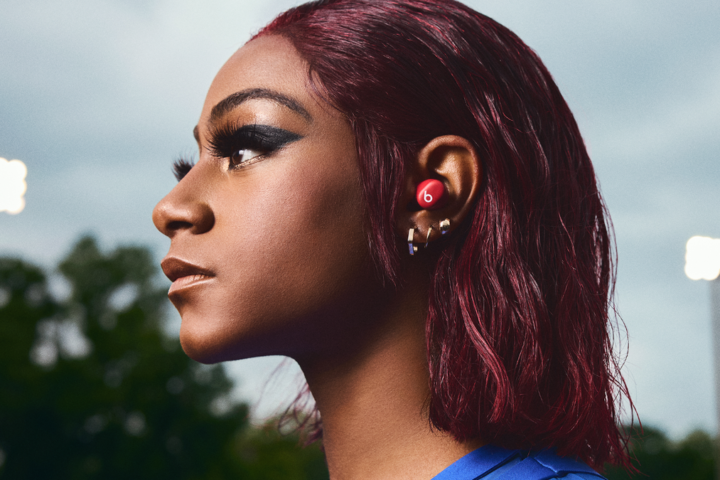Kettlebells are one of the best pieces of equipment for full-body workouts. With just a handful of moves, you can engage multiple muscle groups, improve your coordination and burn some serious calories. However, kettlebells can be just as effectively used to target specific muscle groups, such as your shoulder muscles.
This workout from Christian Vila, the founder of Brighton Kettlebells and one of the best kettlebell trainers in England, focuses on your shoulders, directly and alongside other upper-body muscles.
It’s a kettlebell shoulder workout that’s especially well suited to beginners, because it will put your shoulders through their paces and help you improve your overall kettlebell technique. “Try the workout, once a week, for six weeks before progressing,” says Vila.
How To Perform This Kettlebell Shoulder Workout
How you program the following workout will depend on your fitness goals. “If you’re training for intensity and fat loss, try 30 seconds of each exercise and rest for 20 seconds before progressing to the next, using a weight which allows you to complete each repetition with good form,” says Vila.
If your primary goal is to build muscle and increase strength, try three sets of 6-8 reps of each exercise, before moving to the next.
“Weight-wise, I’d recommend 8kg to 12kg for beginners,” says Vila. However, always select a weight that allows you to complete all of the repetitions with good form.
Always prioritize form over intensity and make sure you’re able to maintain good grip throughout the workout. If the handle gets too slippery, you may try wearing weightlifting gloves or rubbing some chalk or liquid chalk on your hands.
Kettlebell Shoulder Workout Warm-up
The shoulders are one of the most mobile and complex joints in the body. It’s easy enough to strain them with simple daily tasks (think about the time you or someone you know woke up with shoulder pain just by sleeping wrong), never mind when using such an unstable piece of equipment as kettlebells. To minimize your risk of injury and get the most out of your workout, make sure to warm up beforehand.
“Before jumping into the workouts, complete 5-10 minutes of cardio, such as a jog, row or cycle to warm up the whole body,” says Vila. This will increase your heart rate and the blood flow to the muscles. “Then, follow this with the following mobility routine to further prepare the shoulders for the work to come,” says Vila.
Shoulder warm-up exercises, such as shoulder rolls, arm swings and band pull-aparts will help increase the temperature and mobility of your shoulder muscles, tendons and ligaments. “Remember mobility is a big part of shoulder health and strength, allowing you to work through a full range of motion in each exercise,” says Vila.
Beginner Kettlebell Shoulder Workout
“This move promotes mobility around the shoulder girdle, warming up the muscles for the work to come,” says Vila.
Stand with your feet shoulder-width apart, holding the kettlebell by the sides of the handle upside down in front of your chest. Bring the weight over your right shoulder, round the back of your head and over your left shoulder to the start.
“Try to keep the kettlebell close to your head all the way around, with your elbows tucked in, concentrating on how far down you can lower the kettlebell behind the head,” says Vila. Keep your core engaged throughout the entire movement, and make sure you don’t sway or tilt to the side.
2 Kettlebell shrug
The kettlebell shrug is a simple, yet very effective, exercise to strengthen your trapezius, a large muscle group stabilizing the shoulder joint. “You will feel your traps burning towards the end,” says Vila.
Stand with your feet shoulder-width apart, holding the kettlebell in both hands in front of you. “Raise your shoulders towards the ears without bending your arms,” says Villa. Pause, then lower your shoulders under control, stretching your shoulder muscles at the bottom of the movement. Don’t hunch your back or tense up your neck muscles.
“The kettlebell front raise will target the anterior (front) head of the shoulders,” says Vila.
Stand with your feet shoulder-width apart, holding the kettlebell with both hands. “With straight arms, raise the kettlebell until you can see through the hole in the handle in front of your head. Be sure to prevent any rocking of the body to stop you from using your back muscles,” says Vila.
The all-time best move for shoulder strength—but with a single kettlebell. “Two hand overhead presses will build confidence in holding a weight above your head, and target the whole shoulder girdle,” says Vila.
Stand with your feet shoulder-width apart, holding the kettlebell by the sides of the handle upside down in front of your chest. Brace your core, then extend your arms above your head. “Keep your knees slightly bent throughout and your elbows tucked in, locking out your arms at the top of the movement,” says Vila. “Slowly lower the weight to chest level.”
The quintessential kettlebell exercise, the swing primarily targets the muscles of your posterior movement chain, the muscles down the back of your body. However, your shoulders will also have to put in the work. “This move uses the posterior (rear) shoulder head to prevent the kettlebell from pulling you forward,” says Vila.
Stand with your feet wider than shoulder-width apart, holding the kettlebell handle in both hands. Brace your core, retract your shoulders and push your hips back to pull the weight between your legs, keeping your arms and back straight. Thrust your hips forward to swing the kettlebell up to eye level. Control the descent and hinge straight into the next rep.
“Initiate the movement with explosive hip extensions, with a slight bend at the knee. Beware not to squat too much, or use your shoulders like you did in the front raise—allow your hips to do the work, while keeping the shoulders retracted,” says Vila.
The kettlebell clean is a dynamic movement that trains shoulder stability, coordination and balance, and it’s one of the most important kettlebell exercises to master. “This move not only teaches you how to rack the kettlebell, ready for single shoulder presses but will train the upper back and rear shoulder heads, which are essential for full shoulder development,” says Vila.
Stand with your feet shoulder-width apart and the kettlebell between your feet. Push your hips back and reach down to hold the handle. Swing the kettlebell between your legs, then thrust your hips forward and shrug the kettlebell up, keeping it close to your body. Rotate your wrist and slide your forearm under the kettlebell. Reverse the movement to the start.
“Be explosive as you guide the kettlebell from the floor to the rack position, neatly landing the kettlebell on the back of your forearm. Keep your elbow tucked in, before guiding the kettlebell down to the floor,” says Vila.
“If you’re a regular gym-goer, this will feel familiar,” says Vila. Upright rows are typically done with a barbell, but the kettlebell version feels easier on the wrists and arms.
Stand with your feet shoulder-width apart, holding the kettlebell in both hands in front of you. “Take the kettlebell from a full hang at your hips to your chin, leading with the elbows and keeping the kettlebell close to your body. Keep your knees slightly bent to protect your back and to prevent rocking of the body,” says Vila. Keep your core braced throughout.
About Our Expert
Christian Vila is a NASM-certified personal trainer, kettlebell trainer and strength coach with more than 20 years of professional experience. He is the owner of Brighton Kettlebells, a kettlebell training studio in Brighton, England. Christian Vila holds a BA degree in Sport Science from Canterbury Christ Church University, and has been granted the title of MMA Strength & Conditioning Trainer by the Institute of Human Performance, Florida, USA. He has trained under the world’s best trainers, including Angie Dowds (Biggest Loser series), Steve Cotter (IKFF), Martin Rooney (TFW) and Mike Mahler (Aggressive Strength) to become one of England’s top kettlebell trainers.







